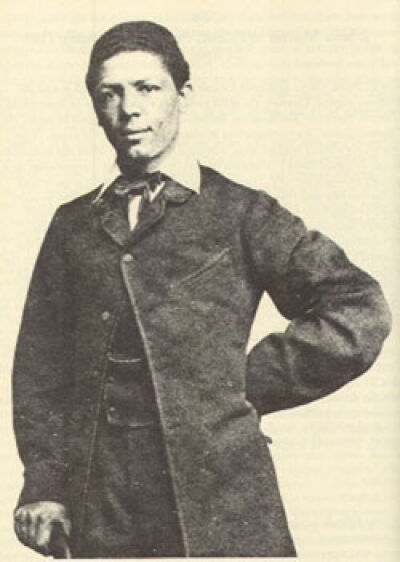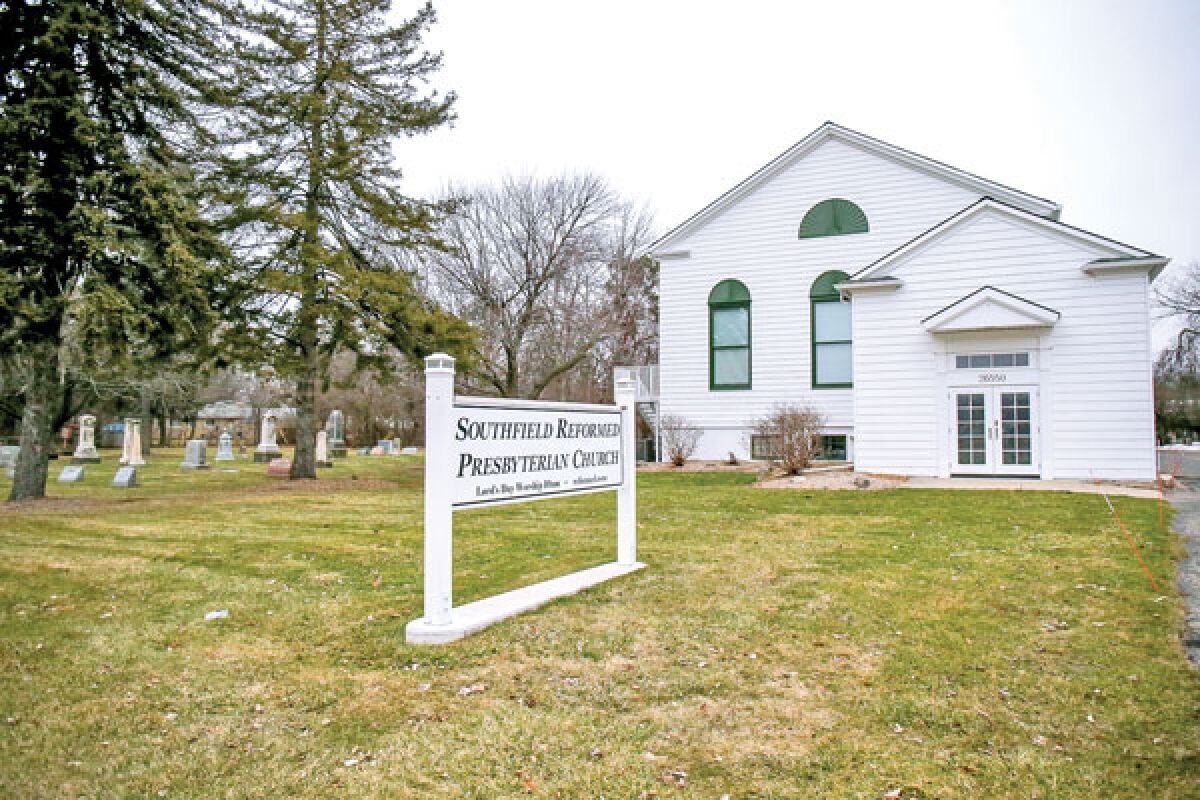
Martin left his mark on not just African American history, but American and world history.
Photo provided by Joy Young
SOUTHFIELD/BIRMINGHAM — The Birmingham Museum and the Oakland County Historical Society kicked off Black History Month with a lecture on freedom seeker and abolitionist John Sella Martin Jan. 13 at the Southfield Public Library.
“The Underground Railroad in Southfield and the Extraordinary Story of John Sella Martin” was the first in a yearlong series sponsored by the Oakland County Historical Society in celebration of its 150th anniversary in 2024.
The story of Martin also tied into a five-community research project on the Underground Railroad in Oakland County led by the Birmingham Museum and funded by a grant from the Michigan Council for the Humanities, an affiliate of the National Endowment for the Humanities. The project involves volunteer-based teams in Birmingham, Farmington, Royal Oak, Pontiac and Southfield researching connections to the Underground Railroad in Oakland County communities.
“The goal is to bring awareness of stories of both abolitionists and formerly enslaved freedom seekers to the public,” Leslie Pielack, the Birmingham Museum director and the research project director, stated in a press release. “Sharing documented evidence with educators, students, and families will cast light on the little-known history of the anti-slavery movement in our area. We all benefit when we have more of the whole picture.”
A traveling exhibit and interactive website funded by the grant is set to launch later this month. Early stages of research unveiled nearly two dozen documented freedom seekers and abolitionists. The traveling exhibit was on display at the Southfield Public Library for the presentation on Martin and will be traveling around southern Oakland County to be featured in libraries and public buildings for two months at a time where the public can see it free of charge.
The lecture opened with a proclamation presented by Oakland County Commissioners Penny Luebs, Gwen Markham, Kristen Nelson, Yolanda Smith Charles and Linnie Taylor in acknowledgment of the Oakland County Underground Railroad Public History Project.
Joy Young, a Birmingham Museum genealogy researcher and cultural consultant, became interested in the project while it was on tour through West Bloomfield, where she lives. Young said that her jaw was on the floor at the Birmingham Museum, and she could not believe the history that unfolded in her community. After reading about Martin, she became fascinated by his life and shared that she was surprised that she had never heard his story before. Young began researching and uncovering more about Martin’s life and legacy. She is currently working on a book illustrating the significance of his life’s work.
“From my research, I found out he was a man of faith: a pastor, an abolitionist, a leader, a statesman, a civil servant, an orator, a family man, a politician, and an editor who taught himself to read and write. He was an overcomer. He was a dreamer of freedom for himself and others in slavery. He was a revolutionary and a free thinker, well-read and sociable. He showed great courage in his pursuits, and many think he was handsome,” Young said in the presentation. “John Sella Martin, though small in stature at 5 feet 8 1/2 inches, was a giant of a man during the time of slavery, the Civil War and reconstruction. With all of these accolades, he was not perfect, which you shall see. And though he overcame much sorrow and difficulty, his life ended tragically and too soon.”
Young led the presentation on Martin and expressed her desire for people to know his story as an integral part of African American and world history. She informed the attendees that they were just mere footsteps away from the spot where Martin sought freedom through the Underground Railroad at Covenanter Church, now known as Southfield Reformed Presbyterian, with the help of abolitionist minister James S.T. Milligan, who housed Martin for six weeks in 1857. After Martin’s time in Southfield, he became a world-renowned Baptist minister, traveling to England and Scotland, where he was considered one of the most influential abolitionists against American slavery.
During her presentation, Young detailed the life of Martin, stating that he was born in 1832 in North Carolina into slavery and was the result of a relationship forced upon his mother, Winnifred — Mrs. Henderson forced Winnifred into a relationship with her nephew as a way to distract him from having relationships with other wealthy white women until his marriage to a white heiress. The relationship resulted in two children, Martin and his older sister, Caroline. Around the time Martin was 7 years old, his family was sold by Mrs. Henderson to a slave trader, which led them to Georgia. When he was around 10 years old, he, his mother and his sister were separated when their enslaver sold them to settle a debt.
Martin would go on to be bought and sold at least 11 times. At one point enslaved by a man named Mr. Powers, he worked as an errand boy for gamblers. He heard rumors of African Americans living as free people in the north and in Canada. He became passionate about freedom and took it upon himself to learn to read and write. When he was 17 years old, he learned where his mother was and tried to get her to escape her enslaver, who was known for his cruelty. He visited her and watched as her captor ruthlessly beat her. Because of that visit, Martin would spend seven months in jail for running away. In his autobiography, he described this time as “the most valuable months” of his life because he met a man from the north who taught him about grammar, history, arithmetic and geography, and gave him instructions on how to reach the north.
A year later, when Mr. Powers died, Martin was sold to an African American from Mobile, Alabama, named Horace King, an architect and builder of many bridges and structures that still stand today. His time with King was short before he was sold again. His mother died in 1852, and he never saw her again. He received a message from her before her passing that he viewed as prophetic: “Tell my son, he shall not wear out his days in slavery.”
Martin began planning his escape to the north, and on Jan. 6, 1856, he declared himself a free man at the age of 24 years old. Following the Underground Railroad, Martin made his way to Covenanter Church in Southfield. Martin lived out the remainder of his life as an abolitionist and minister, traveling the country and the world to fight for freedom. He was a colleague of Frederick Douglass and an acquaintance of Abraham Lincoln. When he died in 1876, his obituary appeared in the Detroit Free Press, as well as many other city newspapers in Michigan, England and Canada.
“At the young age of 43, and in just 20 years from escaping slavery and going to Chicago, John Sella Martin left his mark on not just African American history, but American and world history,” Young said. “This man accomplished a lion’s share of achievement that benefited Black Americans and Americans over the last 147 years.”
For more information on the Birmingham Museum and the Oakland County Underground Railroad Public History Project, visit bhamgov.org/museum.
To learn more about the Southfield Historical Society, contact Darla Van Hoey at darvanhoey@gmail.com.
To stay up to date on other events hosted by the Oakland County Historical Society, visit www.ocphs.org.
 Publication select ▼
Publication select ▼






















